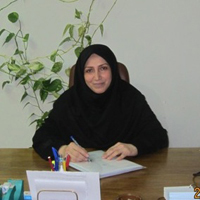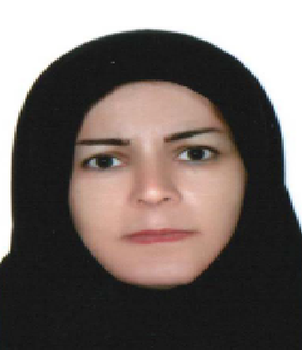Spatial-temporal analysis of the Prevalence of covid-19 in the neighborhoods of Tehran
Covid-19 is the third coronavirus after SARS and MERS in the last two decades, which has been able to infect humans by passing through animal species. What is certain is that cities are key jumping off points for the spread of a global pandemic. As this disease has challenged the health infrastructure of cities and the planning of urban planners. Now cities have come to the conclusion that they are very vulnerable and cannot be proud of what they have. Currently, the World Health Organization considers the Covid-19 disease a threat to all countries. The 22nd most populous city in the world has the highest death rate from respiratory diseases in Iran. Before the spread of Covid-19, respiratory diseases were the third cause of death in Iran. In this research, the metropolis of Tehran has been selected as the most populous and most polluted city in the country for research in the field of corona disease. And the main goal of the research is to investigate and spatially analyze disease-19 at the level of neighborhoods in Tehran. The main necessity of this research is the presence of the covid-19 disease at the level of the society and in Tehran as the center of the country, which has so far caused a lot of loss of life and, due to widespread closures, a lot of financial losses to the government and citizens. Due to the unknown nature of this virus, the present study and other related studies are helpful in identifying important dimensions.
The method of this research is analytical and exploratory. The data of this research was obtained from the Ministry of Health and Medicine, National Statistics Center of Iran and Tehran Municipality. In age grouping, one of the population census standards including 5 age groups 0-14, 15-24, 15-44, 45-46 and 65 years and above was the basis of the analysis. The data related to the spread of covid-19 (60111 people) were analyzed and prepared in Excel software during 20 months, and then descriptive analysis (including mean, standard deviation) was presented using SPSS software. In this research, 60,111 cases of Covid-19 have been investigated in the neighborhoods of Tehran. Set scan software was used for spatio-temporal analysis. In order to identify and discover the clusters, at first, time analysis was used, then spatial analysis was used, and finally spatio-temporal analysis of the prevalence was done. To investigate spatial autocorrelation, Moran's and cluster and non-cluster analyzes were used. Also, in this research, statistical scanning software was used to identify clusters.
The investigation of the spread of covid-19 during 20 months in the neighborhoods of Tehran showed that the distribution of the infection in the neighborhoods was heterogeneous. Men were more affected than women in all age groups, and the age group of 45 to 64 years had a higher incidence than other age groups, and the age groups under 25 had the lowest rate of infection in Tehran. The results of the statistical scan to identify time clusters showed that the highest rate of outbreak occurred in the 13th to 16th months of the outbreak, and as a result, a time cluster was identified in these months. This time cluster covered from April to July 1400. These clusters were close in terms of time and number. Also, 5 spatial clusters were identified in the investigated period, and clusters one and three were more important in the center and north of Tehran. The most spatial concentration of these clusters was in the center, north and south of Tehran. Some of the most important risk factors are in these two clusters. Like the presence of more elderly people in the northern areas, and polluting gases such as PM10 and NO2 were more scattered in the central and northern areas of Tehran. Finally, a significant spatio-temporal cluster was identified in the center toward the south and southeast, which showed that the prevalence clusters must have been influenced by the specific characteristics of urban neighborhoods. For the purposes of this analysis, spatio-temporal clusters are of the highest importance because they include both time and space. Previous studies show that the central and southern neighborhoods of the city have unsuitable environments due to the intense concentration of activities and pollutants. The results of the local Moran analysis showed that the high patterns are located in the center and the low patterns are located in the western part of the city. The results of the local Moran based on gender showed more changes, so that the high clusters in men were identified in the northern regions in addition to the center, and the low clusters were also present in the southwest in addition to the western regions. In women, there was a high clustering pattern in the central areas, but no low patterns were seen. The reason for the presence of these clusters can be related to the following: the extent of the western areas (21 and 22) is large and the population density and building density are low in them, and instead, most of the businesses and official buildings are located in the central areas of the city. For example, District 12 (Tehran's main commercial center) is not only located in busy streets, but also has the largest number of gas stations. Also, the height of the land is high in the northern and western areas of the city and there are natural air corridors in them. Instead, the amount of air pollution in the central and southern parts of the city has been reported more than in other areas, which can be one of the factors of high clusters in these areas.
It seems that for the effective prevention and control of the spread of Covid-19, individual health and medical policies and measures should be integrated with urban planning strategies, including the control of environmental pollutants and the implementation of environmental health programs. Therefore, paying attention to the investigated prevalence clusters at the neighborhood level of Tehran can help the policy makers of this sector for better planning.
- حق عضویت دریافتی صرف حمایت از نشریات عضو و نگهداری، تکمیل و توسعه مگیران میشود.
- پرداخت حق اشتراک و دانلود مقالات اجازه بازنشر آن در سایر رسانههای چاپی و دیجیتال را به کاربر نمیدهد.




